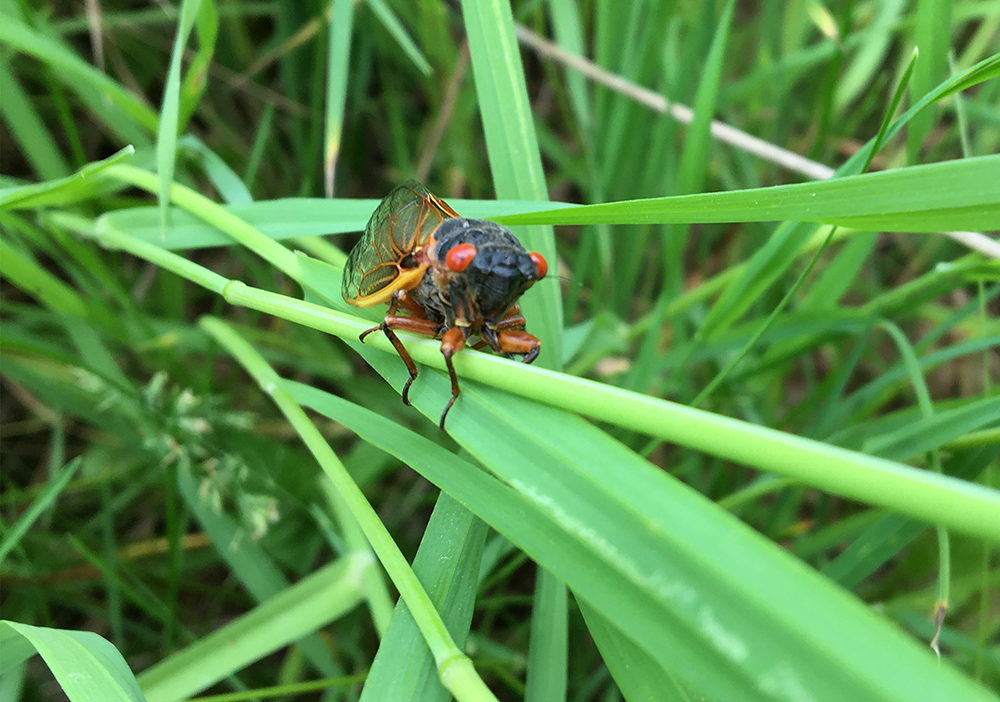
MIKE MILLER
As it turns out, there is a subgroup of our 17-year cicadas that are four years early in this cycle. While they are more numerous in the Chicago region, we still see some in central Illinois. What we are hearing now is just a sampling of what we will hear in 2024. There have been 30 different broods of periodic cicadas identified in North America. These broods are known to be made up of at least seven different species of the genus Magicicada. I think that genus name is spectacular, and if you look at this interesting insect, the name isn’t hyperbole. They are magic!
When our 17-year cicadas emerge in full force in 2024, they represent the single largest insect emergence in the known world. The insects that will emerge have spent the last 17 years of their lives below ground, suckling on the roots of trees. When the last instar of the nymph emerges, usually in late May or early June when the soil temperature reaches 64 degrees Fahrenheit, they climb up on a tree trunk, split out of their skin, and emerge as a winged adult with black bodies and red eyes. The males set up chorus groups and emit a collective sound that can be quite loud, reaching 100+ decibels –– so loud that you can’t hear someone shouting right next to you.
Their goal is to call in females from far and wide. Given all of the longevity of their 17 years of life, their adulthood lasts for only a few days. As adults they are only built to breed. They no longer have the ability to feed or digest food. That space in their tiny bodies has been replaced with sound chambers in males and egg chambers in females.
Most insects are on an annual life cycle, and there are several species of annual cicadas we hear each year. These are the sounds of the dog-days of summer. The periodic cicadas are a different type of insect on a different scale of time. Think of them as the Rip Van Winkle of the insect world. Seventeen years is a long time for any animal. This life span outlives just about every pet and farm animal we know. At 17 years, they are getting close to what we might think of as a human generation.
The last time we had a full-blown 17-year cicada emergence was 2007. Let’s call that emergence “Generation Z” if we turn back time, their grandparents (Generation X, 1973) emerged just as America was grappling with the Watergate Scandal. Two generations before that (Generation V, 1939), Nazi Germany was planning its invasion of Poland. Four generations before that (Generation R, 1871) President Ulysses S. Grant signed the Civil Rights Act. Three generations before that (Generation 0, 1819) Illinois was celebrating its first anniversary of statehood. All of this human history has taken place in only 11 generations of an insect. Magic indeed.
What will “Generation Z +1” experience in 2024? We can only hope that there is a world left for them to sing their songs, indulge in life and start a new generation. Sadly, of the original 30 broods of periodic cicadas that were known to exist, only 15 survive. While there is no indication that our brood is in any eminent danger of extinction, one never knows. In a world where things change at such a drastic rate, let’s also hope that there will still be a human ear left to listen to their song in 2024.
Mike Miller is supervisor of environmental and interpretive services at Peoria Park District.

